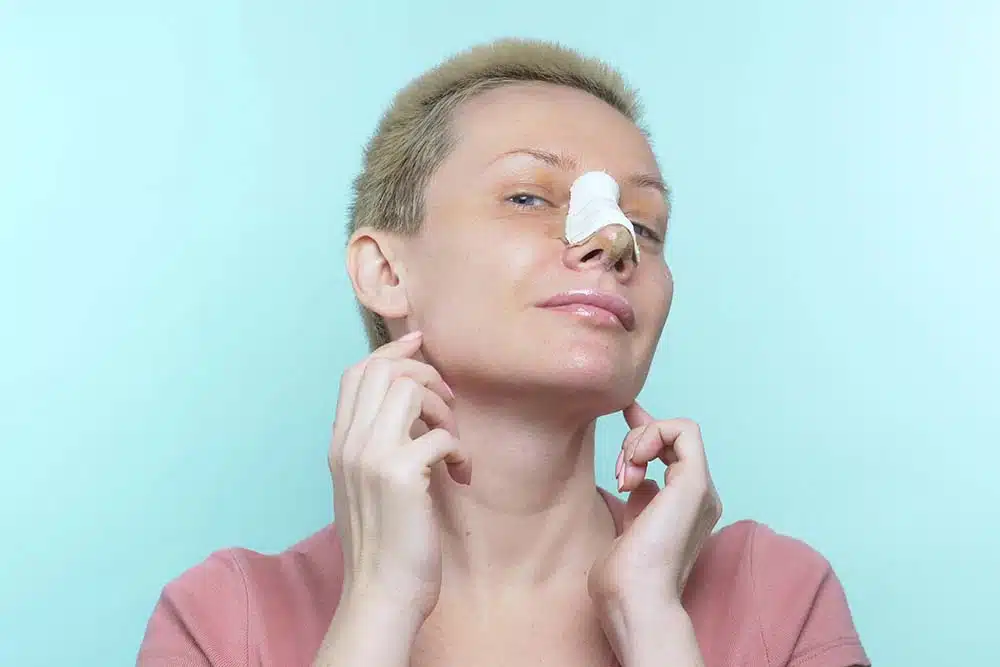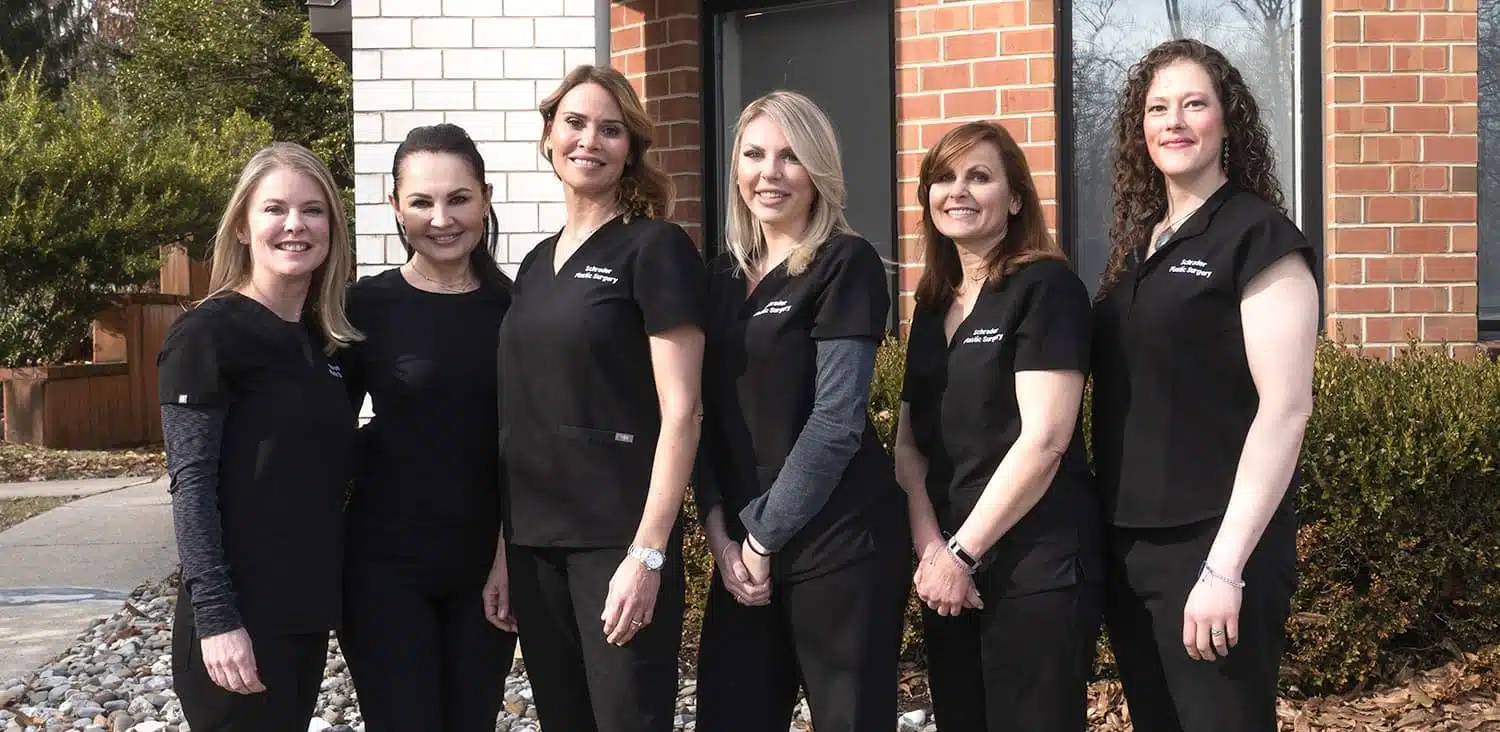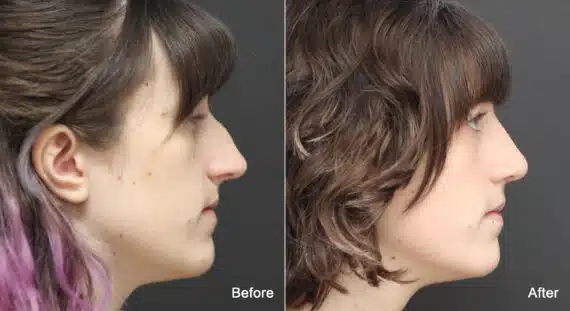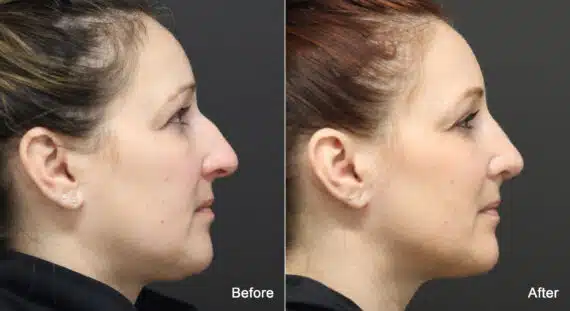Even though swelling is a normal part of the rhinoplasty recovery process, it’s natural for patients to feel concerned about it after surgery. However, most of the time, swelling shouldn’t be a cause for alarm. It’s a temporary and expected part of your nose’s healing journey as your body recovers from the procedure.
That said, there are steps you can take to minimize swelling and speed up recovery. And although complications are rare, excessive or persistent swelling can sometimes indicate an issue that needs immediate attention. Read on to learn how to manage swelling and when it might require expert intervention.

How Long Does Swelling Last After Rhinoplasty?
Most of the noticeable swelling after rhinoplasty subsides within 3 to 4 weeks. By then, the majority of the puffiness should fade, revealing a more defined nose. However, it’s important to remember that full recovery can take up to a year as subtle swelling continues to dissipate. For patients undergoing revision rhinoplasty or those with thicker skin, noticeable swelling may persist slightly longer but should become presentable after the first month.
Rhinoplasty Swelling Progression
The healing process after rhinoplasty can be divided into several stages, with swelling typically decreasing over time. Here is a general timeline of the rhinoplasty recovery process:
- Week 1: Significant swelling, tenderness, difficulty breathing through the nose, splints, and nasal dressings; bruising around the eyes, cheeks, and lips; puffiness at the nasal tip; uneven swelling; and asymmetry.
- Week 2: Significant reduction in swelling; remaining bruising can be concealed with makeup; new nose shape becomes more distinguishable; return to work if not too strenuous; avoid intense activities for up to 6 weeks.
- Week 3-4: Dramatic reduction in swelling, visible signs of surgery mostly gone, new nose more defined, clearance for moderate exercise, possible persistent swelling for revision rhinoplasty or thick skin patients.
- Months 2-3: Continued healing and swelling reduction; full results begin to show; stable bone structure allows for wearing glasses and resuming weight-bearing exercises.
- Months 3-6: The resolution of numbness or prickling sensations on the skin or inside the nose begins.
- Months 6-12: Final results are visible, minimal to no swelling, repositioned cartilage fully conformed to the new shape, and nasal tip is more refined.
Factors that can impact the recovery timeline include skin texture and thickness, revision surgery, and extensive nasal reconstruction.


Trust your face to a specialist
My Goal is to create Harmony, Balance & true Beauty
How to Reduce Swelling After Rhinoplasty
Swelling after rhinoplasty is an inevitable part of the healing process, but there are effective ways to manage and reduce it. By following these guidelines, you can promote a smoother recovery and help your nose look its best sooner:
- Follow Your Surgeon’s Aftercare Instructions: Always adhere closely to the guidelines provided by your surgeon to ensure proper healing and minimize complications.
- Elevate Your Head: Keep your head elevated for several days after surgery, even while sleeping. This helps to reduce fluid buildup and swelling.
- Use Cold Compresses: Apply ice packs to your nose and surrounding areas for 10-20 minutes at a time during the first 72 hours post-surgery. Avoid placing ice directly on your skin.
- Avoid Strenuous Activities: Refrain from vigorous exercise or heavy lifting for at least 2-3 weeks and avoid swimming for at least a week to prevent increased swelling.
- Limit Sodium Intake: Reducing your salt consumption can help minimize fluid retention, which contributes to swelling.
- Stay Hydrated: Drink plenty of water to support your body’s natural healing processes.
- Avoid Sun Exposure: Protect your nose from the sun, as UV rays can increase inflammation and swelling. Use sunscreen if you need to be outdoors.
- Don’t Blow Your Nose: Refrain from blowing your nose for at least one week to avoid irritating the surgical site.
By implementing these practices, you can support your body’s recovery and reduce swelling effectively.
Rhinoplasty before & after photos
* All patients are unique and individual results may vary.
When to Worry About Swelling After Rhinoplasty
In most cases, swelling after rhinoplasty is normal and will resolve on its own. However, there are certain signs that may indicate a problem requiring immediate attention. Be on the lookout for the following:
- Severe Swelling That Worsens Over Time: If the swelling doesn’t improve after the first few weeks or continues to worsen, it could be a sign of an underlying issue.
- Asymmetrical Swelling: Swelling that appears uneven or lopsided and persists for more than a week may need evaluation.
- Swelling Accompanied by Pain or Fever: Pain that increases or is paired with fever or discharge could indicate an infection.
- Difficulty Breathing Through Your Nose: Persistent nasal obstruction due to swelling that doesn’t resolve might need medical attention.
If you experience any of these symptoms, contact your surgeon promptly to ensure proper evaluation and treatment. Early intervention can prevent complications and support a smoother recovery.
Choosing The Best Surgeon For Your Rhinoplasty
Rhinoplasty is one of the most delicate, complicated, and expensive facial plastic surgeries. To achieve the best results and ensure that your investment and recovery are worthwhile, it’s essential to choose a surgeon with specialization, experience, and board certification. These factors help ensure both safety and outstanding results.
If you live in New Jersey and you’re considering rhinoplasty, Dr. Nicole Schrader is a double-board-certified facial plastic surgeon specializing in rhinoplasty and other facial procedures. With years of experience and a commitment to individualized care, Dr. Schrader delivers exceptional results for her patients. Call us at 609-279-0009 or contact our office today to schedule a consultation and learn how she can help you achieve your goals.


